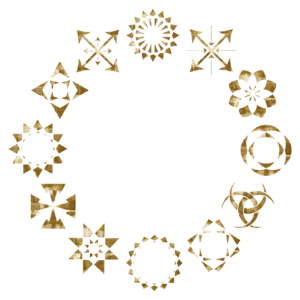A type is a living breathing pattern that manifests through living breathing people. Once someone has years of experience with typology, the type starts to come to life. There’s more than words on a page; there’s a rhythm, a chemistry. This is what type really is. And once you understand that rhythmic essence of the types, then the descriptions become a ‘guide’ rather than scripture. Jung and Gurdjieff knew this – they were describing archetypes, not full people, and both were careful to explain that their systems (Cognitive Functions and Enneagram, respectively) were about a fundamental underlying gestalt which underlies the psyche of anyone that embodies that archetype.
If you can feel the types, and see them in motion in actual humans, it is clear that no description on its own is adequate. The various descriptions are maps and the people are the trees and the houses. The underlying gestalt of each archetype is clearly the same throughout each system, even if descriptions by different authors contradict each other – at least to my eye. Not everyone sees the world the way I do, but I certainly don’t gain much anymore from arguing about this description vs. that. It is a necessary stepping stone toward understanding what type is, but I don’t see how tit for tat cut-and-paste does anything to bring a type to life and make it breathe, so that a human may embody its essence. Once we get past that second-grade cut and paste, we graduate to the world of archetypes and rhythm of the world. Yacking about this definition vs that, is no longer relevant.
When you hear a piece of music, do you argue that someone else played the notes in a different syncopation? Fur Elise is Fur Elise, no matter who plays it. It can be to a rock beat, a jazz beat.. it’s still the same fundamental melody and chords. This is what makes it Fur Elise. You can argue that someone completely changed it, but if you heard that intro and you said “Fur Elise!” then your gut knew what song it was. This is the same for types.


